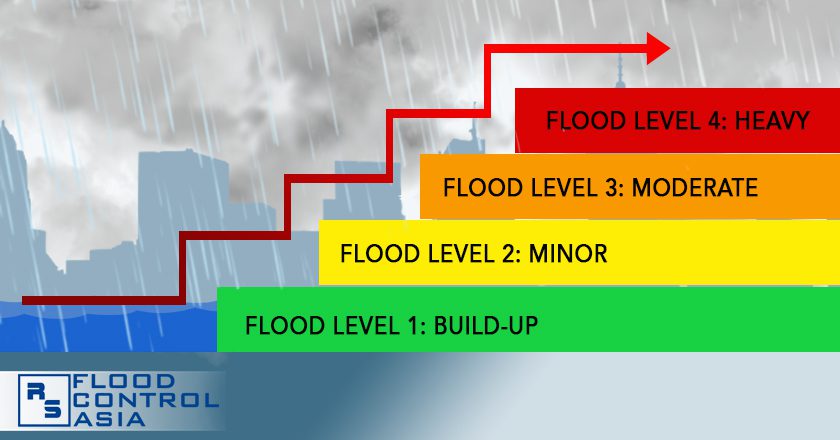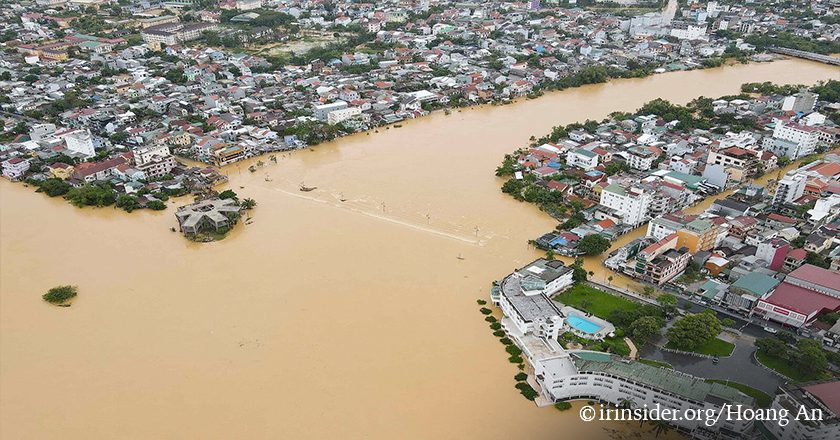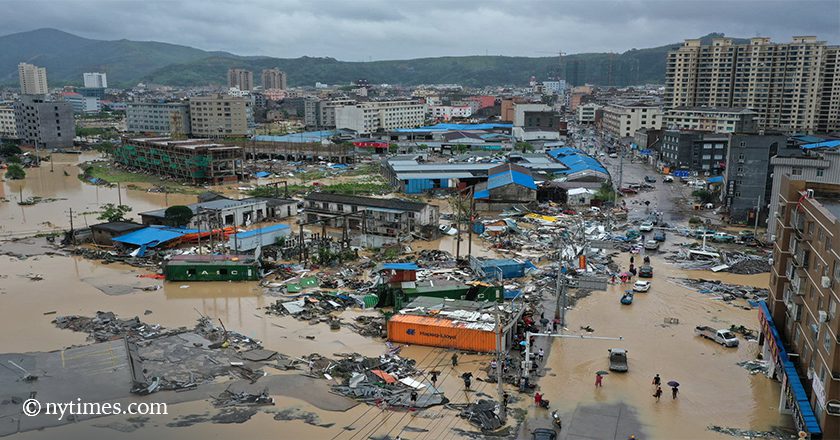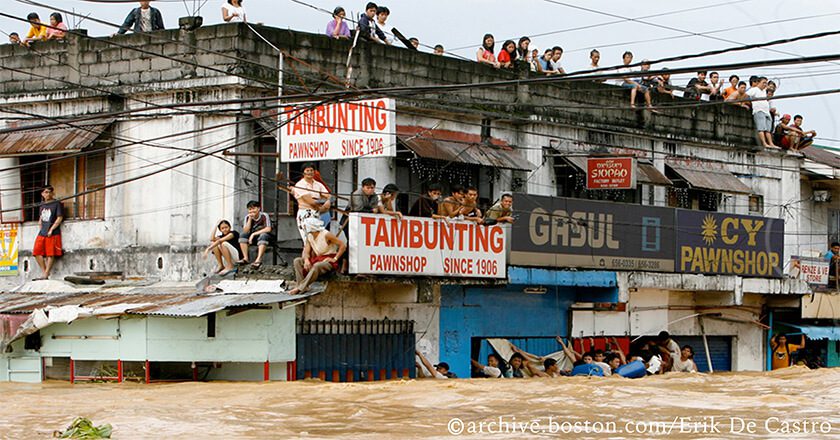The levels of flooding and how to prepare for them
October 30, 2020 | Created by: Andreas Klippe | Comments

Flooding can always occur in the most unexpected time. Danger will knock on your doorstep and being unprepared spells the difference between safety and peril.
Knowing how high flooding in your area can get will help you prepare for a worst-case scenario. Nothing beats a proactive stance in disaster preparedness. Floods can ruin your lifetime investments, and worst still, claim lives in your community.
Flood levels
Like any other fortuitous event, floods always have definite levels. Knowing these will amply prepare you to surmount the dangers.
The following levels will guide you through your preparation. Normally we talk about 4 different levels.
Flood Level 1: BUILD-UP

The first and non-alarming level of flood consists of these following events:
- Water level up to the ankles.
- Accumulation of water on street curbs, woodlands, and drainage canals.
- No structural damage and loss of lives on this level.
- Monitor flood level every 10 minutes.
Preparation gets you one step ahead. This level may seem harmless at first. But it transforms into the next bigger thing. And then to the next.
Flood Level 2: MINOR

A minor flood level involves preparations of what to do while anticipating worse flooding.
- Water level up to the knees.
- Danger posed to pedestrians. Streetwalking becomes dangerous.
- Slight and tolerable flooding and some road closures may occur.
- The community Emergency Operation Center opens.
- Staff begins monitoring river gauges and flood conditions round the clock.
- Flood information phone lines are updated hourly with current river gauge and river level information.
- This is the critical stage. Flood protection should be in place. If flood protection is not ample, consider moving to higher grounds.
- Keep monitoring.
Continue intense monitoring, “Minor” may not anymore be the prevailing level the next minute.
Flood Level 3: MODERATE

Floods are unpredictable. Your home may be dry and comfy this minute, but it could be flooded and chaotic in the next. Flood protection must be considered now.
- Water up to the hips.
- Floodwater levels are dangerously high.
- Poses some degree of danger to humans and animals.
- Numerous road closures and some overtopping of waterways can be expected.
- Investigation crews are sent to monitor flood control facilities.
- Flood currents become notably forceful.
- Floodwater level can result in structural damage.
This is the level of flooding where you should start packing your essentials. Evacuation might be needed.
Flood Level 4: HEAVY

Dangerous debris along flood paths may be present. Danger lurks everywhere.
At this level, only those who have ample flood protection will feel safe. This level is a defining moment in your life where you will seriously consider flood-proofing your home or property. Others will feel regretful because of not having to prepare for this perilous event when they still can.
- Water level up higher than the shoulders.
- Water level at historic mark.
- Emergency evacuation by boat or helicopter may be implemented.
- Flood debris can cause high dangers.
- Drowning is highly possible.
- Power services may be discontinued.
- Emergency services are on 24 hour alert.
- Floodwater current force is dangerous to humans and animals.
To prevent this from ever happening, be guided with the following steps on preparation.
The 3-Step Guide for Flood Protection
Having a proactive checklist can save you from flood damages. Here is a 3-step guide to help you!

STEP 1: Prepare BEFORE THE FLOOD NOW. Creating a plan for your household, including your pets is the initial step for preparation. Consider planning where to go, what to do, and what you will need.
STEP 2: Survive DURING THE FLOOD. In the event that your residence becomes submerged in floodwaters and you have nowhere to go, call for immediate help. Rescuers will be on alert for distress calls. Proceed to safe shelter. Do not forget items like medicines, batteries, transistor radio, toys for the kids, hygiene products (i.e. soap, toothpaste, alcohol, etc.) as well as food and clean water stocks.
STEP 3: Be safe AFTER THE FLOOD. Getting regular updates on flooding from the authorities should be considered before returning home. Properly clean your home from material brought by the flood. Consider disinfection. Another very important aspect is to verify and dry all electrical outlets and sockets before switching back your electricity. And prepare for again with STEP 1 for the next flood.
Finally, and to avoid getting flooded again, find a long-term solution. Consider German-technology flood protection systems that have been proven effective in protecting properties. These flood solutions can be custom made for any building or structure.
Get protected from floods; check the experts

The advent of modern technology ushered-in a modern and cost-efficient flood protection system. Choose a company of flood experts that can really help you and advise you before you spend money for the wrong solution. You might pay twice, or even worse: You might not be protected at all and your money was spent for nothing. All that is needed is a detailed engineering assessment to determine your flood risk. The experts will then prescribe and install your required flood protection barrier solution.
Get the latest flood protection technology and advice from flood experts by signing up for the newsletter (if ever you haven’t yet).
Stay safe and flood-free!






